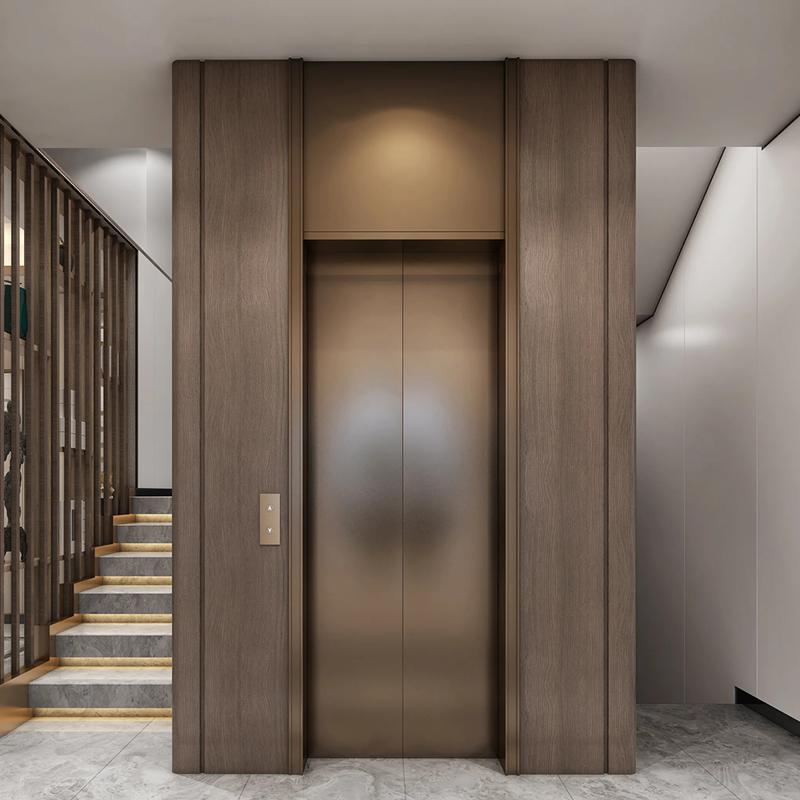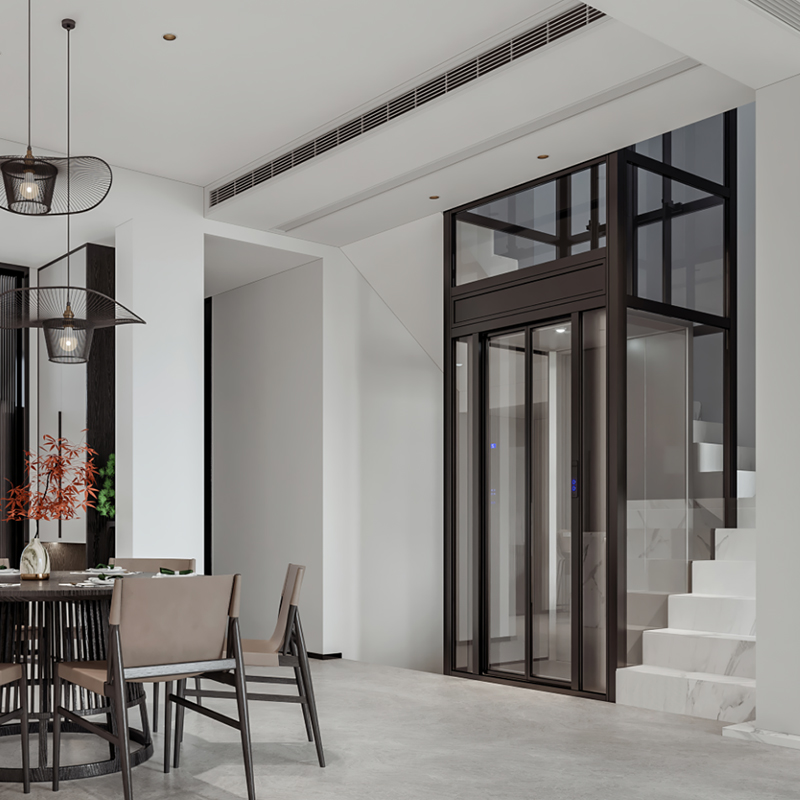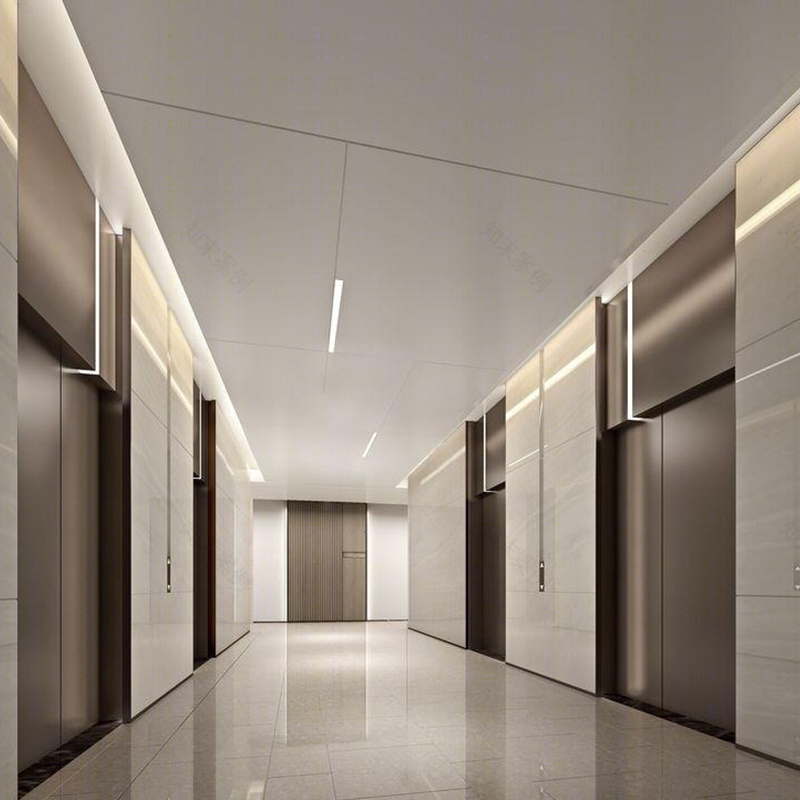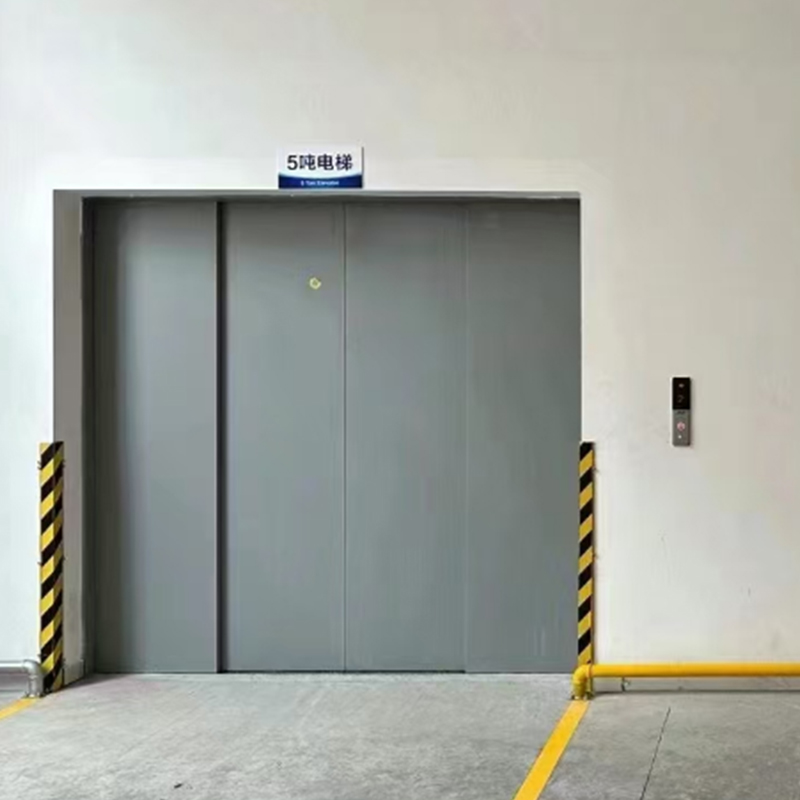
Customized Traction Gantry Elevators: How Can They Unlock the Infinite Upward Potential of Your Living Space?
Posted by Admin | 21 Aug
When people talk about improving the quality of life, most tend to start with home decoration or smart devices, yet rarely do they think that a tailor-made elevator could be the key to truly transforming the experience of vertical living. In those residences where space is at a premium, traditional elevator installation schemes often find themselves at a loss—either requiring a vast shaft space that is hard to come by, or imposing extremely strict demands on the building’s structure that are difficult to meet. However, a new type of solution known as the traction gantry elevator is quietly changing this situation, and with its unique structural advantages, it is turning the dream of having an elevator in a small space into a tangible reality. The core of this kind of elevator lies in its gantry frame structure, which is like an independent skeleton that integrates all the core components within itself; it does not require a complex civil engineering shaft, and only needs a reserved space to enable quick and stable installation. This undoubtedly opens a new door for those families who yearn for the convenience of vertical transportation.
Customization: Tailoring Every Detail to Fit Your Home
Villa and small residence owners have long had demands for elevators that go far beyond mere means of transportation. What they look forward to is a “personal butler” that can perfectly integrate into the home style while satisfying the different needs of family members. Therefore, customization has become the core to meet such demands. From the size of the elevator car and its load-bearing capacity, to the materials of the interior decoration, the design of the lighting, and even the way the door opens, every single detail can be adjusted according to the owner’s actual situation and aesthetic preferences.
For instance, a family of three may only need an elevator with a load capacity of 300 kilograms and a moderately sized car, while a multi-generational family may require a larger load capacity and a more spacious car to accommodate wheelchairs or bulky items. In terms of decorative style, you can choose a solid wood car that complements the retro wooden furniture in your home, adding a touch of warmth and elegance; or a glass car that seamlessly fits into a modern minimalist style, creating a sense of transparency and lightness. You can even have the family’s exclusive mark—such as a surname initial or a meaningful pattern—engraved on the control panel, turning the elevator into a unique symbol of the household. This kind of in-depth customization makes the elevator no longer a cold machine, but a warm corner full of personalized charm that carries family stories and memories.

Safety and Aesthetics: A Perfect Fusion in Design
As a means of transportation that is used frequently in daily life, the safety performance of an elevator has always been a top priority. The design philosophy of customized elevators is precisely the art of perfectly integrating safety and beauty, ensuring that functionality and aesthetics go hand in hand.
In terms of safety guarantees, modern customized elevators are generally equipped with multiple intelligent control systems to eliminate potential risks. These include anti-pinch protection devices that instantly stop the door from closing when an obstacle is detected, overload alarm systems that prevent the elevator from operating when the weight exceeds the limit, and fault self-diagnosis functions that can promptly identify and report abnormalities in the system. In emergency situations, such as sudden power outages or equipment failures, the emergency rescue function will start automatically, activating backup power to safely transport passengers to the nearest floor, ensuring that they will not be trapped in the car. In addition, customization service providers will also carry out targeted safety reinforcement on the elevator according to the particularity of the installation environment—for example, reinforcing the gantry frame for buildings in earthquake-prone areas, or adding waterproofing measures for elevators installed in semi-outdoor spaces.
In terms of beauty, the elevator is no longer just a functional existence but can become a highlight of the home’s interior design. Through ingenious design, it can blend into the overall space or even become a visual focus. For example, installing a sightseeing elevator in a well-lit position with large glass panels allows family members to enjoy the outdoor scenery—such as a garden, a courtyard, or a city view—to the fullest while going up and down, turning the short ride into a pleasant experience. Or choosing an elevator door that is the same color as the wall and using hidden hinges, making the elevator integrate with the surrounding decor to achieve an “invisible” effect, maintaining the integrity of the home’s design. These design considerations make the elevator not only improve the convenience of life but also become a symbol of the homeowner’s taste and pursuit of quality.
Machine-Room-Less Technology: Revolutionizing Installation and Space Usage
With the continuous advancement of technology, the rise of machine-room-less technology has brought revolutionary changes to elevator installation, especially for space-constrained residences. Traditional elevators usually require a large machine room on the top floor to place driving equipment, control systems, and other core components, which undoubtedly increases the cost of the building, occupies valuable living space, and may even affect the appearance of the roof.
In contrast, machine-room-less traction elevators skillfully integrate these core components into the shaft—either installed on the top of the car or embedded in the wall of the shaft—eliminating the need for an additional machine room. This not only greatly simplifies the installation process and shortens the construction period but also saves precious building area, making it possible to install elevators in spaces that were previously considered “uninstallable,” such as small attics or compact lofts.
Moreover, this technology reduces noise and energy consumption: the integrated design minimizes mechanical friction, lowering operating noise to ensure a quiet living environment; at the same time, the use of energy-efficient motors and frequency conversion control systems reduces power consumption, making the operation of the elevator more environmentally friendly and efficient. For owners, this means less civil engineering work during installation, faster completion of the project, and lower long-term maintenance costs, truly achieving a “time-saving, labor-saving, and worry-free” installation experience.
Solutions for Old Buildings: Rejuvenating Vertical Transportation
In many old buildings, due to historical reasons—such as being built in an era when elevator facilities were not popular—there are usually no reserved elevator shafts. This brings great inconvenience to the elderly, people with limited mobility, and even families with young children living in these buildings, making daily going up and down stairs a heavy burden.
Against this background, solutions for installing traction elevators in old buildings have emerged as the times require, and the traction gantry elevator is undoubtedly one of the best among them. Its modular design and self-supporting structure enable it to be installed without damaging the original main structure of the building—there is no need to chisel walls or modify the foundation, thus avoiding potential safety risks to the old building. Whether it is attached to the outside of the building (using the outer wall as a support) or renovated inside the stairwell (utilizing the idle space next to the stairs), the gantry elevator can find a feasible installation plan that fits the building’s structure.
These solutions usually take into account the overall beauty of the building. Through carefully designed appearances—such as using the same color system as the old building’s exterior walls or adopting a simple and elegant style—the installed elevators can coexist harmoniously with the old buildings, avoiding the sense of abruptness. In some cases, the added elevator even becomes a unique scenic spot in the community, enhancing the overall image of the neighborhood. More importantly, it solves the problem of vertical transportation, makes the old buildings rejuvenate, and greatly improves the convenience and happiness of residents’ lives.
Conclusion: A Personalized Vertical Living Solution
All in all, customized traction gantry elevators provide not just a vertical transportation tool, but a complete set of personalized vertical living solutions. It combines superb engineering technology with humanized design concepts to meet multi-dimensional needs such as small space adaptation, multi-functionality, high aesthetics, and high safety. From the initial demand communication and scheme design (where professionals conduct on-site surveys to tailor the plan), to the later installation, commissioning (ensuring smooth operation), and maintenance services (providing regular inspections and timely repairs), every link reflects the service concept centered on customers.
Choosing customization services means that you no longer need to compromise on standardized products, but can have an elevator that completely belongs to you—one that fits your home’s size, matches your aesthetic taste, and meets your family’s special needs. It is not only a capable assistant for family members in their daily lives but also an extension of the taste of the home space. Through customization services, you can truly start a convenient, comfortable, and high-quality vertical life, making your home full of infinite upward possibilities no matter from which angle you look at it.
-
 Founding Road, Qidu Linhu Economic Zone, Wujiang City, Jiangsu Province, China
Founding Road, Qidu Linhu Economic Zone, Wujiang City, Jiangsu Province, China
-
 [email protected]
[email protected]
-
 +86 17701557926/+86 0512-63818375
+86 17701557926/+86 0512-63818375


 En
En English
English русский
русский Español
Español عربى
عربى




